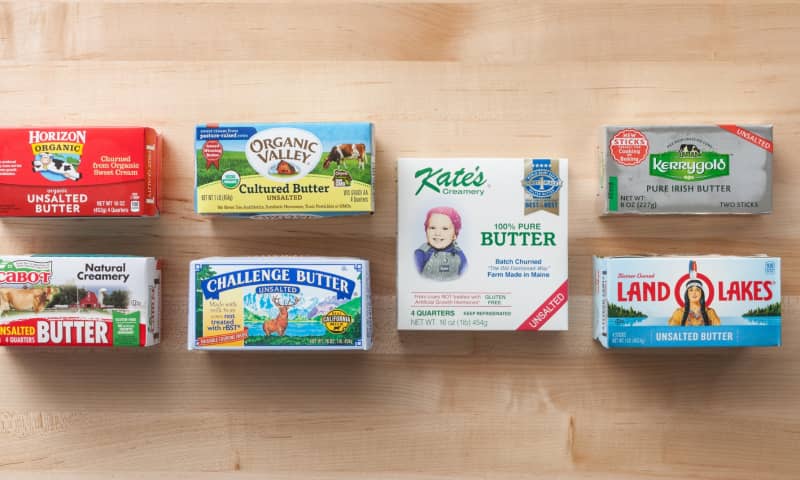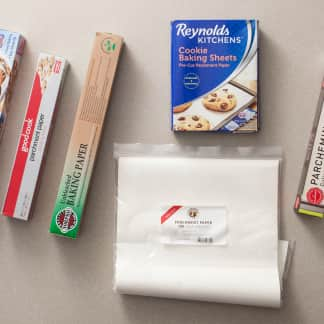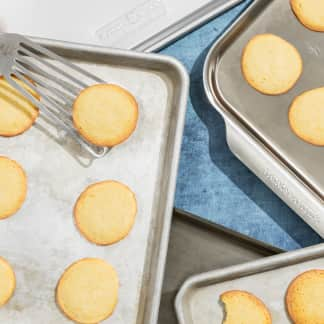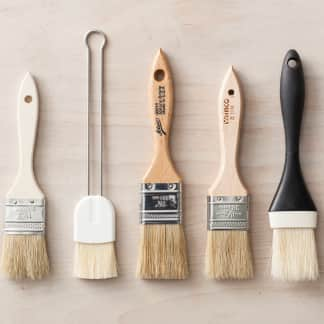In the test kitchen, we go through 30 to 40 pounds of unsalted butter a week as we bake cakes and cookies, make frostings and pancake batter, and cook pan sauces, roast chicken, and sautéed vegetables. We use unsalted butter almost exclusively because the sodium level of the salted stuff can vary, and we prefer to control the seasoning of our food.
But which unsalted butter is best? A few years ago, we decided it was Plugrá, a high-fat product with a luscious texture. At almost $12 a pound, though, it’s expensive. Although Plugrá is sometimes worth the splurge, we wanted a butter that was affordable and convenient for everyday use.
We assembled seven national top sellers, priced from $4.49 to $7.58 per pound. Two were cultured, which means that flavorful bacterial cultures were added during production, and one of these butters was imported from Europe. The rest were domestic “sweet cream” butters. All were purchased in the user-friendly format familiar in America: individually wrapped ¼-pound sticks, sold in packs of two or four. All but one product had measurement markings right on the sticks; the outlier had markings on the box. Tasters sampled the butters in three blind tastings: plain, in pound cake, and in sugar cookies.


 Buy at Walmart
Buy at Walmart

















